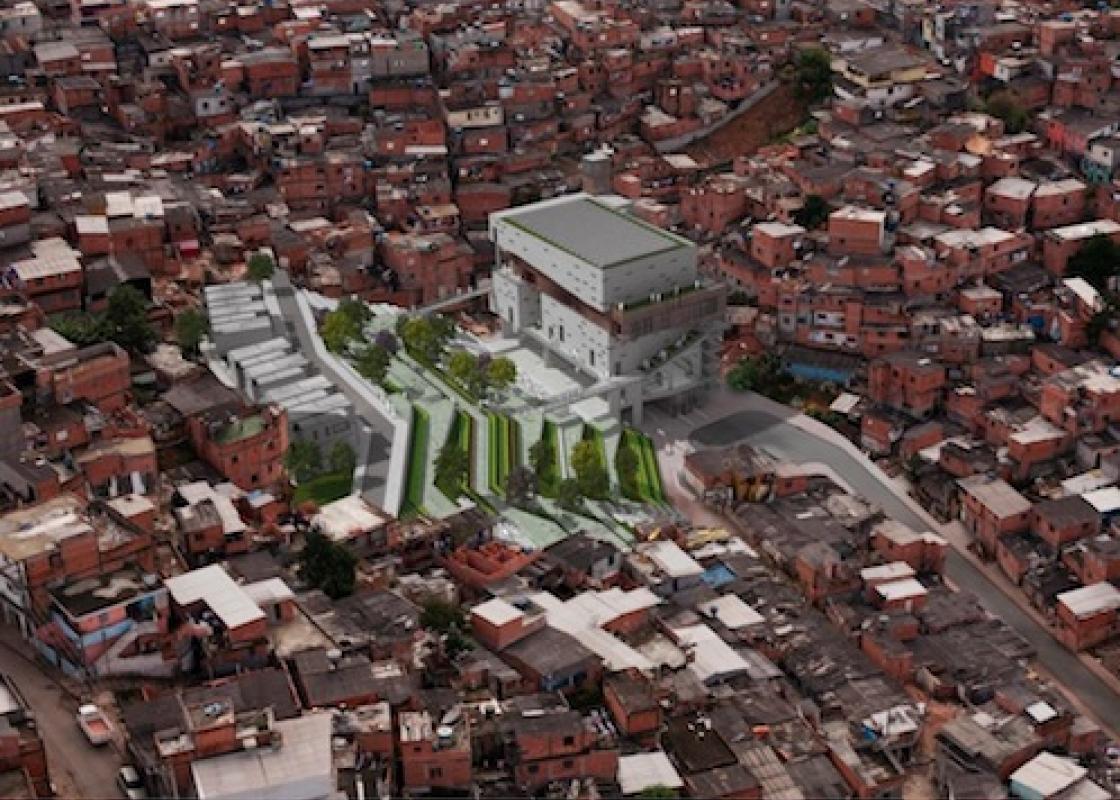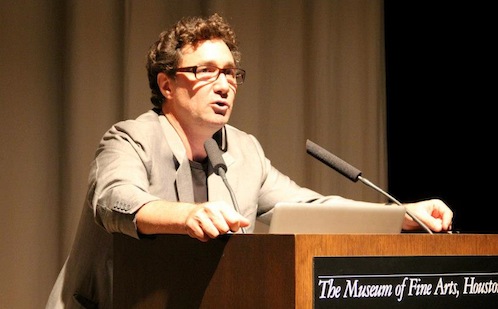
Alfredo Brillembourg speaks at The Museum of Fine Arts, Houston
Alfonso E. Hernandez of Kirksey Architecture responds to the lecture by Alfredo Brillembourg for the RSA/RDA Fall 2012 lecture series. Please let us know your thoughts. If you missed it, watch it on YouTube.
It is always invigorating to see and hear someone speak with great conviction, especially when it is someone in the same field as you are. And to hear Alfredo Brillembourg at the MFAH Brown Auditorium talk about his Urban-Think Tank was no exception. He spoke with the conviction of someone who believes he is the bearer of an insurmountable truth.
Venezuela, a poor rich country of contrasts familiar to many Houstonians due to the oil connection, has been the backdrop of much of his work since 1993. Since then, he has designed, built, and taught all over the world, in association with his Urban-Think Tank partner Hubert Klumpner, with whom he also cofounded the SLUM Lab (as in Sustainable Living Urban Model) at the Columbia Graduate School of Architecture, Planning, and Preservation. Currently he holds the Architecture and Design chair at the Swiss Institute of Technology in Zurich.
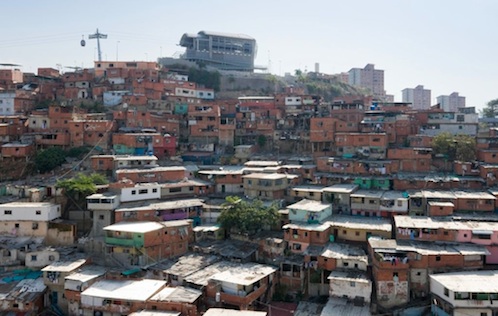
Cable car station at the top of a Caracas favela, photos courtesy Alfredo Brillembourg.
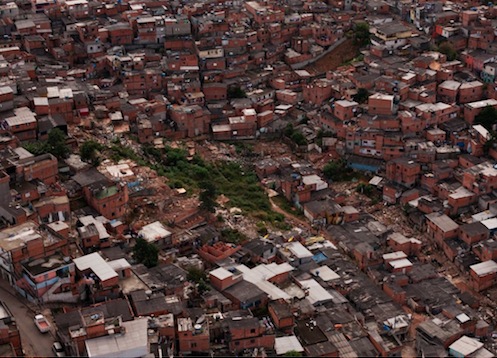
Frequently flooded site in a Sao Paolo slum.
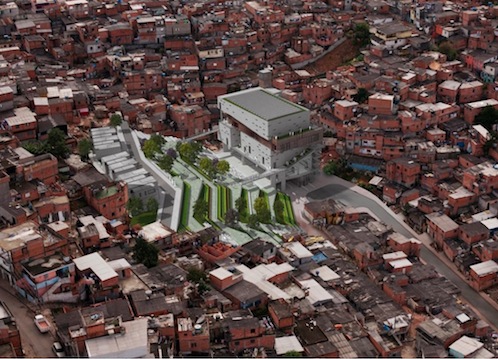
Urban-Think Tank rendering for a community center.
The work he showed strongly focuses on studying and responding to the necessities of underserved communities in Caracas and other world cities. It follows one of the main paradigms driving architecture nowadays: the diagramming of a complex datascape combined with a strong social commentary. In a country as polarized as Venezuela, this kind of effort often comes with controversy, as it can become very political, very fast. (Imagine a place with the biggest oil reserves in the world where the Tea Partiers and the Occupiers have gone at it for 15 years).
The Urban-Think Tank recently received the Golden Lion award at the already controversial 2012 Venice Biennale for their entry “Gran Horizonte, Torre de David” (Grand Horizon, Tower of David), where they mapped, studied, and later proposed a limited intervention to an unfinished office tower in Caracas occupied by squatters since 2007. This work, certainly blurring the boundary between architects (you know, the ones that design buildings for a living) and cartographers (the ones that design maps for a living), has brought a lot of animosity of its own: Jimmy Alcock, one of the most prolific Venezuelan architects of the late twentieth century, wrote an open letter where he claims Mr. Brillembourg is driven by “deseos de figuracion” (a desire for celebrity), to which Mr. Brillembourg responded that Alcock would never understand the work of the Urban-Think Tank because “he has always designed for the rich.” Even Mr. Brillembourg himself claimed during the lecture that former collaborators Matias and Mateo Pinto have severed ties with him because they think the Urban Think tank has gone “too radical.”
As in any good lecture, Brillembourg raised points that could lead to a further debate:
- Incrementally slums may be brought up to better living standards but is glorifying them really an ethically sound idea? Not everybody living in a slum wants to be in one.
- Is this a synthetic urban proposal for the future? (Is this a valid or desirable methodology for urban growth?) Or is it a response to a pressing urban reality?
- Is this response to a pressing urban reality relevant to the developed world, as migration patterns shift?
- Is the configuration and construction of the barrios conditioned by their climate? Can they exist outside a tropical or sub-tropical environment?
His lecture brought up a point of view from another place where the economy and geopolitics---and architecture and urban design as a result---are shaped by the oil business. Keeping in mind all the differences, it is a mirror Houstonians shouldn’t avoid looking at.


